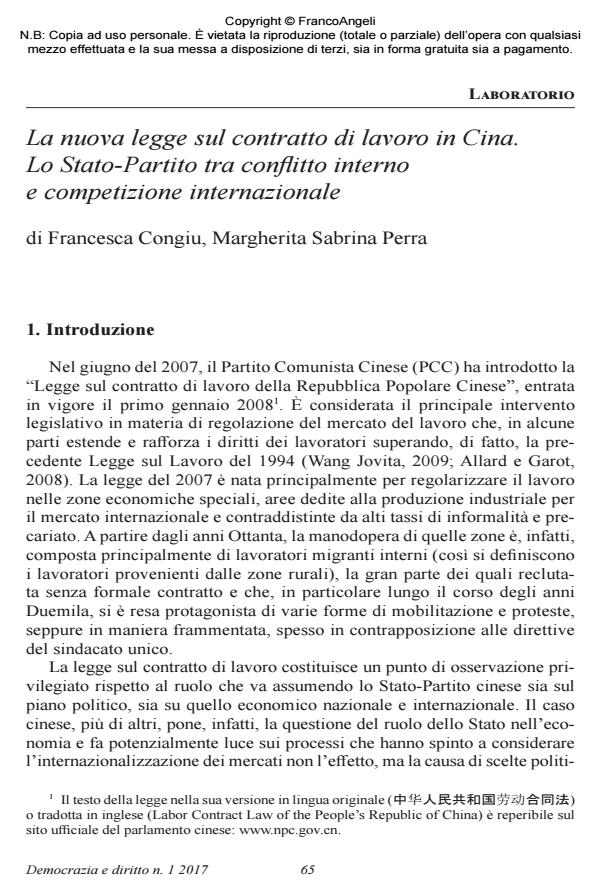La nuova legge sul contratto di lavoro in Cina. Lo Stato-Partito tra conflitto interno e competizione internazionale
Titolo Rivista DEMOCRAZIA E DIRITTO
Autori/Curatori Francesca Congiu, Margherita Sabrina Perra
Anno di pubblicazione 2018 Fascicolo 2017/1
Lingua Italiano Numero pagine 27 P. 65-91 Dimensione file 368 KB
DOI 10.3280/DED2017-001006
Il DOI è il codice a barre della proprietà intellettuale: per saperne di più
clicca qui
Qui sotto puoi vedere in anteprima la prima pagina di questo articolo.
Se questo articolo ti interessa, lo puoi acquistare (e scaricare in formato pdf) seguendo le facili indicazioni per acquistare il download credit. Acquista Download Credits per scaricare questo Articolo in formato PDF

FrancoAngeli è membro della Publishers International Linking Association, Inc (PILA)associazione indipendente e non profit per facilitare (attraverso i servizi tecnologici implementati da CrossRef.org) l’accesso degli studiosi ai contenuti digitali nelle pubblicazioni professionali e scientifiche
Francesca Congiu, Margherita Sabrina Perra, La nuova legge sul contratto di lavoro in Cina. Lo Stato-Partito tra conflitto interno e competizione internazionale in "DEMOCRAZIA E DIRITTO" 1/2017, pp 65-91, DOI: 10.3280/DED2017-001006